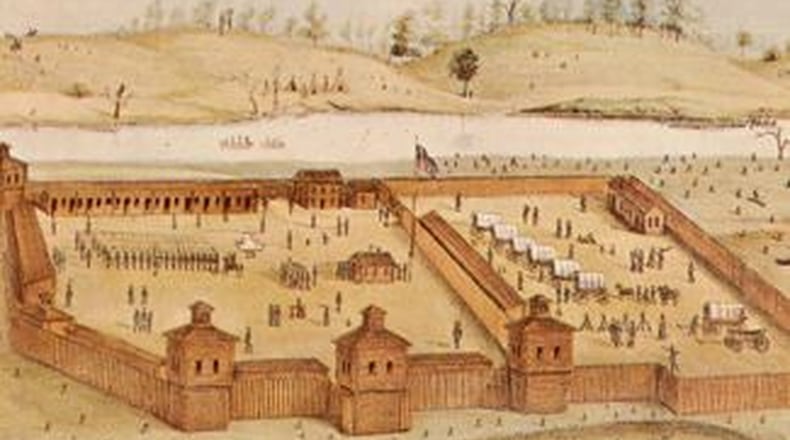Before and during the American Revolution, both the colonies and the British coveted the area known then as “the West” in the Ohio region. It was occupied and defended by Native Americans, who denied that anyone could convey their land without their permission.
The Army, based at Fort Washington in what is now Cincinnati, wanted to push north. It was decided that a “chain of forts” would be built over 470 miles, all the way to Fort Pitt, which is located in what is now Pittsburgh. The first link on the chain after Fort Washington became Fort Hamilton.
A small group of soldiers took at least three days to cut an 18-mile road — more accurately, a path — through the tangled wilderness to the site of Fort Hamilton.
Lt. Col. William Darke led the advance party that selected the location for the fort. Darke’s soldiers established a camp on the east bank of the Great Miami River, near the present Columbia Bridge, while they inspected the unknown wilderness landscape. Darke chose a site on the east side of a ford, a shallow river crossing that was part of an old Indian trail.
Northwest Territory Gen. Arthur St. Clair arrived a few days later and ordered the creation of a fort, named in honor of Secretary of the Treasury Alexander Hamilton.
The fort was built beside the river on land that today extends a little more than a block north and south from the intersection of High Street and Monument Avenue. Its exact footprint is uncertain. It was used mostly as a training, supply and communications base for between 2000-3000 soldiers at a time.
Fort Hamilton was also a primary relief stop for pack horses critical to the army’s supply line in the unsettled Ohio region wilderness. The fort included stables and other facilities for equine care.
Two military campaigns moved north through Fort Hamilton in attempts to end Indian resistance to settlement.
After setbacks, Gen. Anthony Wayne was victorious, defeating the Indians in the Battle of Fallen Timbers in Northwester Ohio in 1794.
In 1795, Wayne met with Indian leaders and formulated the Treaty of Greenville, bringing peace to much of the future State of Ohio.
Fort Hamilton itself was vacated in 1796. After the Indian campaigns ended, many of the soldiers remained there to establish Hamilton and Butler County.
Various Hamilton Journal-News columns by historian Jim Blount were referenced to complete this report.
About the Author





